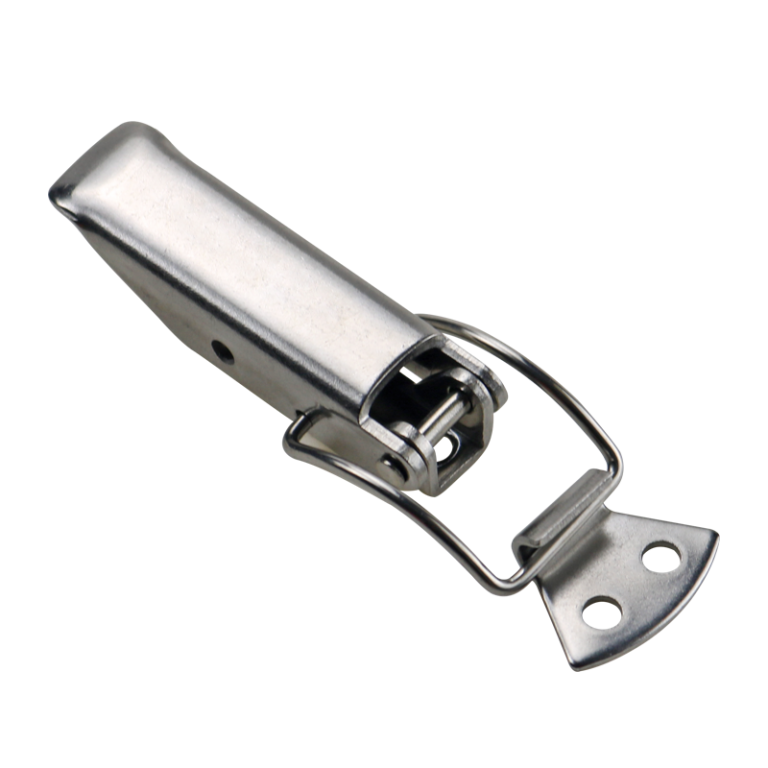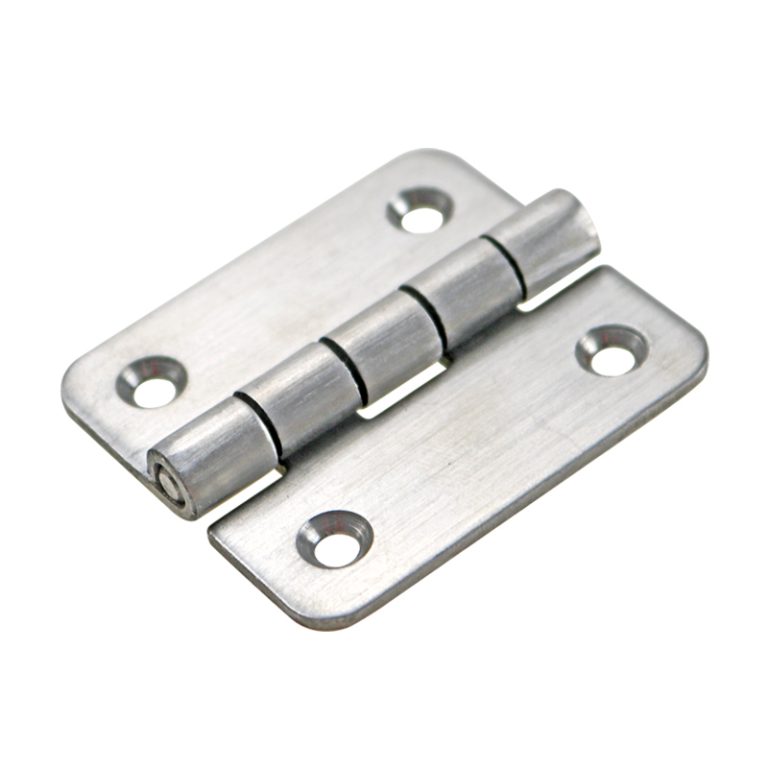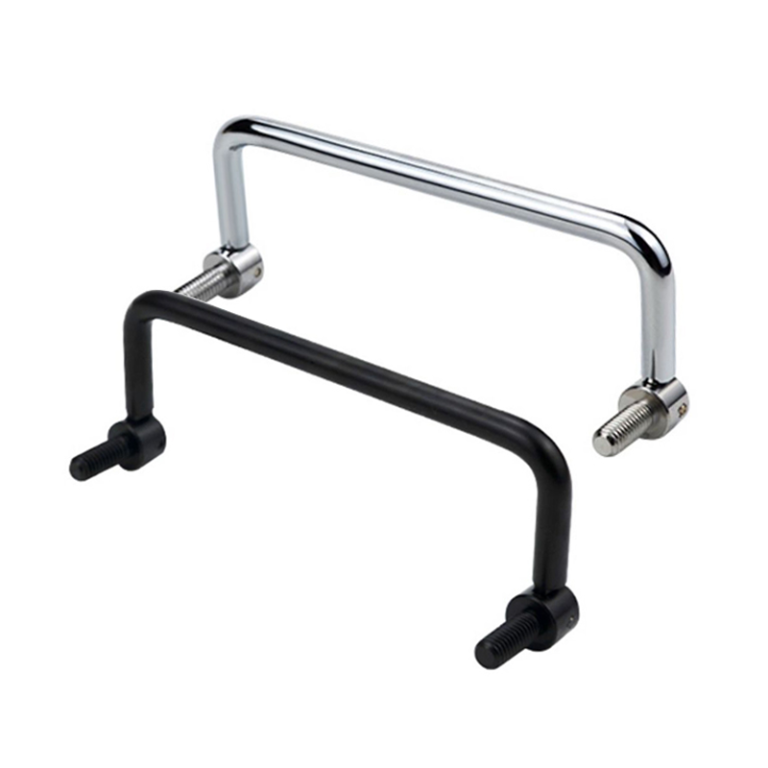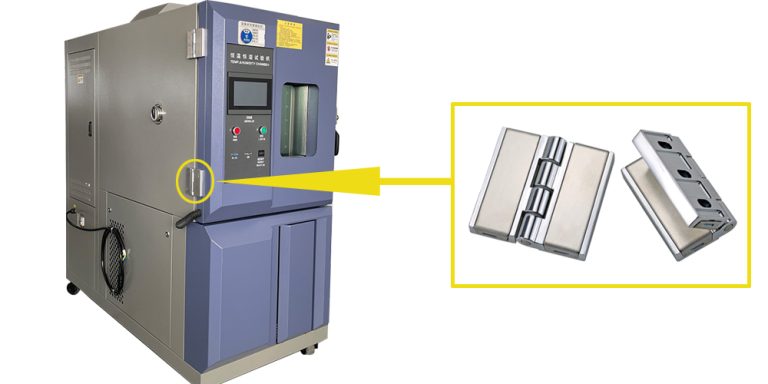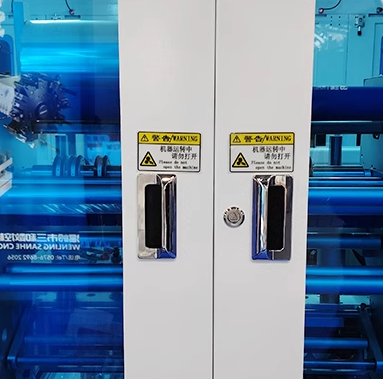A HTAN é um dos principais fabricantes de dobradiças, pegas e fechos industriais na China.
-
+86 13720060320
-
julius@haitangs.com

Selection and Application Guide for Positioning Stop Hinges in Industrial Enclosures
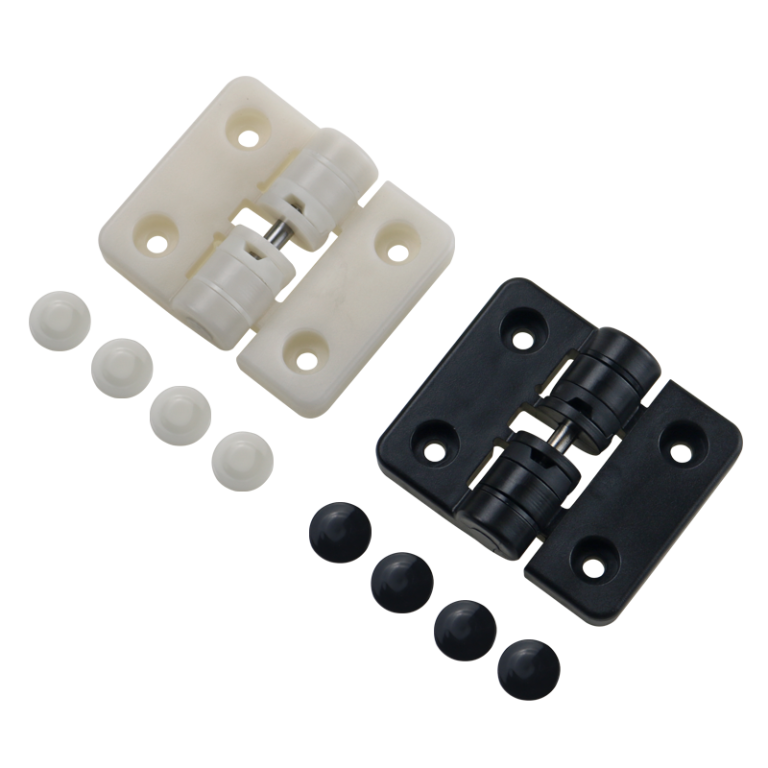
Positioning stop hinges are specially designed for industrial equipment doors, which can lock the door at a preset angle (e.g. 90° or 180°) during the opening and closing process to avoid accidental closure or over-expansion. Its internal structure through the spring, slot and other structures to achieve precise angle control, to ensure operational safety and equipment stability.
Important Role in Industrial Equipment Enclosures
Industrial equipment doors are opened and closed frequently for daily maintenance (e.g., electronic control cabinets or production line chassis). Positioning stop hinges prevent doors from closing suddenly due to gravity or vibration, protecting personnel from pinching and preventing contact with internal components. At the same time, they reduce wear and tear on hinges caused by frequent collisions.
Basic knowledge of positioning stop hinge
Definition and Principle
A positioning stop hinge automatically locks when it reaches a specific angle (e.g., 90°) and must be manually forced to continue opening or closing.
For example, when the hinge is vertical, an internal clasp immediately engages the door panel.
For example, if the hinge is vertical, the internal clasp will immediately catch the door panel.
Comparison of common types and materials
| Material | Characteristics | Typical Application |
| Aço inoxidável | Rust-proof, corrosion-resistant | Humid environments |
| Liga de zinco | Cost-effective, heavy-duty | Heavy equipment |
| Engineering plastics | Lightweight, insulating, chemical-resistant | Power distribution cabinets, medical equipment |
Positioning Angle and Torque Requirements
Common positioning angles include 90°, 120° and 180°.
In industrial scenarios, electrical cabinets are often equipped with 90° positioning hinges, while automotive hatch doors need to adopt 180° full-opening structure.
Selection should be based on the weight of the door to calculate the moment value:
Torque (N·m) = Weight (kg) × 9.8 × Distance from hinge to door center of gravity (m)
Note: A 20% safety factor is recommended to ensure reliability.
and the actual application requires an additional 20% load redundancy to ensure reliability.
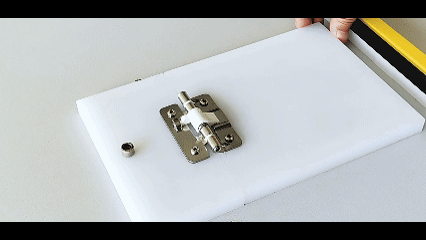
Specific requirements of hinges for industrial equipment cases
Durability requirements
Industrial box door hinges to switch hundreds of times a day, high-quality hinges 100,000 times test, the force weakened by no more than 15%.
Outdoor environment choose IP65 dustproof and waterproof spray/IP66 anti-high pressure washing, wet area with stainless steel or nickel-plated hinges.
Heavy load capacity
Heavy equipment cases (e.g. machine tool guard doors) need to choose hinges with load capacity ≥50kg, and with multi-point installation design.
Special Environmental Performance Requirements
- High-temperature environment: Materials with temperature resistance ≥150℃ (e.g. stainless steel or special coated alloy) are required.
- Vibration environment: Hinges should have built-in damping or anti-loosening screws to avoid vibration-induced positioning failure.
Third party certification and compliance
Priority is given to products that have passed SGS durability test and RoHS environmental certification to ensure safety and compliance.
Application Scenario Analysis of Positioning Stop Hinge
Automated production line equipment box
Case: An automotive assembly line control box uses stainless steel positioning stop hinges, supporting 500 openings and closings per day, with IP66 protection to prevent coolant erosion.
Electrical control cabinet
Case: Zinc alloy hinges are used in the distribution cabinet of an electric power company. 90° positioning prevents the door from closing accidentally and protects the safety of maintenance personnel.
Medical Device Enclosure
Case: CT scanner housing using engineering plastic hinges, 180° fully open design for easy maintenance of the equipment, and in line with medical cleaning standards.
Special Vehicle Hatch
Case: The hatch of fire truck equipment is equipped with heavy-duty hinges, with a load capacity of 80kg and a temperature range of -30℃ to 80℃.

Selection Guide and Precautions
How to choose hinges according to equipment parameters
Door weight and size: When the width of the door is >1m, it is recommended to install 2-3 sets of hinges on each side to disperse the force.
Positioning angle: Choose according to the demand of operation space, for example, 90° is suitable for narrow space, 180° is suitable for fully expanded scene.
Installation and Maintenance Points
Installation: Prefer hidden installation to avoid external bolts affecting the sealing.
Maintenance cycle: Check whether the hinge screws are loose every 6 months and apply grease to reduce wear and tear.
Common Selection Mistakes
Neglect environmental factors
For example, using ordinary plastic hinges in a hot workshop leads to deformation and failure.
Focusing only on price
Low-priced hinges may not pass durability tests and cost more in the long run.
Example of selection table
| Door weight (kg) | Recommended hinge type | Number of installations |
|---|---|---|
| 10-20 | Zinc alloy hinges | 2 sets |
| 20-50 | Stainless steel hinges | 3 sets |
| >50 | Heavy-duty damping hinges | 4 sets |
Conclusão
The long-term stable operation of industrial equipment cabinets relies on the precise design of key components, with positioning stop hinges directly affecting safety and fatigue resistance. Proper selection and standardized installation can extend cabinet service life and significantly reduce maintenance costs.
HTAN provides a standard parts library with more than 30 kinds of specifications and non-standard parts customization service, welcome to contact our technical team at any time to obtain detailed parameters or customized solutions.

-768x768.png)
